Mastering Hreflang for Global SEO: A Comprehensive Guide
Site Audit Issues
Content:
- Understanding Hreflang Tags: Purpose and Importance
- The Foundation of Hreflang
- Evaluating the Need for Hreflang SEO Strategy
- Technical Implementation – The Basics
- Exploring Technical Implementation Options
- Diving Deeper: Other Technical Considerations
- Practical Analysis: Leveraging Netpeak Spider for Hreflang Insights
- Conclusion: Solidifying Your Global SEO Footprint with Hreflang
Making a website for a global audience is very important today. This guide will explain to you how hreflang help achieve this goal. We will show you step-by-step instructions on how to use it to help your website reach more people everywhere.
If you want more people from all places to see your website, learning about hreflang is a great place to start. Let’s know together how to make your website better and more popular all over the internet.
Understanding Hreflang Tags: Purpose and Importance
It’s crucial to show people content that matches their language and where they live. Hreflang tags help with this. They guide visitors to the version of a website that fits their language and location the best. Thus, everyone gets a browsing experience that feels right for them.
What are hreflang tags for?
Hreflang tags help websites that have content in more than one language. They ensure people see the content in their language without causing problems with search engines. Using these tags on a webpage, website creators tell search engines which page version is for which language or country.
For example, if a website has a page in both English and Spanish, the creator can use hreflang tags to show the correct version to users. It may be based on where they are or what language their browser is set to. So, someone in Spain will see the page in Spanish, and someone in the U.S. might see it in English. This way, everyone gets the version that works best for them.
What’s the SEO benefit of hreflang?
Using hreflang tags is good for SEO. They help search engines understand when content is in different languages so it’s not seen as a copy. Copies can hurt a website’s SEO by sharing the value of links between the same pages. It may lower their position in search results.
Hreflang tags make websites better for users by taking them to the content in their language. This can make users stay longer, interact more, and buy something. Search engines like Google care a lot about how users experience websites. Using hreflang tags can help a website rank better in search results.
Using hreflang tags is also great for businesses aiming at specific markets. It ensures users access the correct site version for their region or language, helping the company become more relevant and attractive. This could lead to more website visits and more sales.
The Foundation of Hreflang
Hreflang is essential for making a website work well for people worldwide. It’s necessary for sites with visitors from many places who speak different languages. Knowing about hreflang and using it right can improve how search engines see a website worldwide.
What is hreflang?
Hreflang is an HTML tag that helps websites tell search engines which language and country a specific page is for. This way, search engines can show people the correct version of a page based on their language or where they are. Hreflang uses special codes for languages and countries. For example, “en-us” is for English content aimed at the United States, and “es-es” is for Spanish content for Spain.
What does hreflang achieve?
The main goal of hreflang is to make websites better for people by giving them content in the correct language and version for their region. It makes the content easy to use and tells search engines that the website is essential worldwide.
Hreflang also makes sure content reaches the right people in the way they prefer, stopping them from landing on a page that isn’t right for them. This can lead to fewer people leaving the site and more people staying and interacting.
It means businesses can do better in different markets and make users happier. Search engines can more accurately find and rank pages for other users for SEO.
Evaluating the Need for Hreflang SEO Strategy
Whether to use hreflang in your SEO plan depends on who visits your website. If you have visitors from many places or who speak different languages, adding hreflang is very important. It makes sure people see your site in the way that fits them best, based on where they are or what language they speak.
For websites for people worldwide or with content in many languages, hreflang makes things better for the user and SEO. It guides people to the correct version of your content, which helps with keeping them interested. It could make your site rank better in search results.
Technical Implementation – The Basics
Correctly implementing hreflang tags ensures search engines recognize who and where your content is meant. Valid attributes, return links, and self-referencing are foundational aspects of a proper hreflang implementation.
Valid hreflang attributes
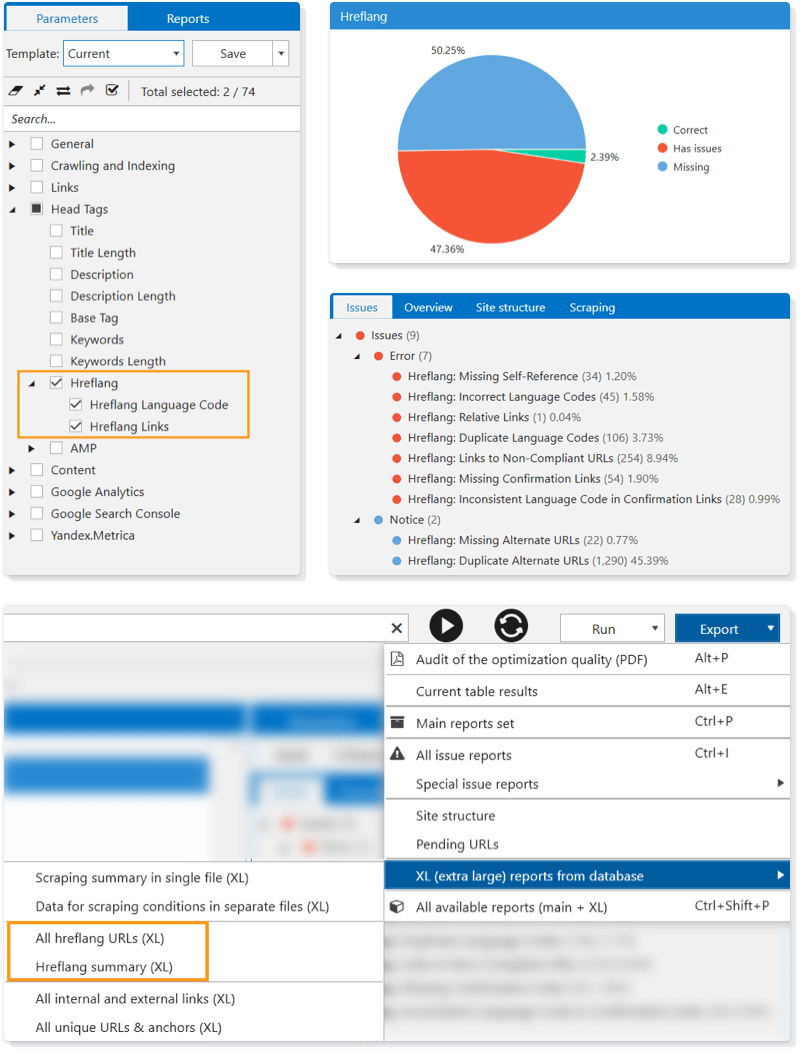
Getting hreflang right begins with using correct attributes. You need to follow specific standards for this. Language codes should match the ISO 639-1 format, and country codes should follow the ISO 3166-1 Alpha 2 format.
For instance, if your content is in English for the USA, you should use “en-us” as your hreflang attribute. For French content meant for Canada, use “fr-ca.”
Ensuring Proper Return Links
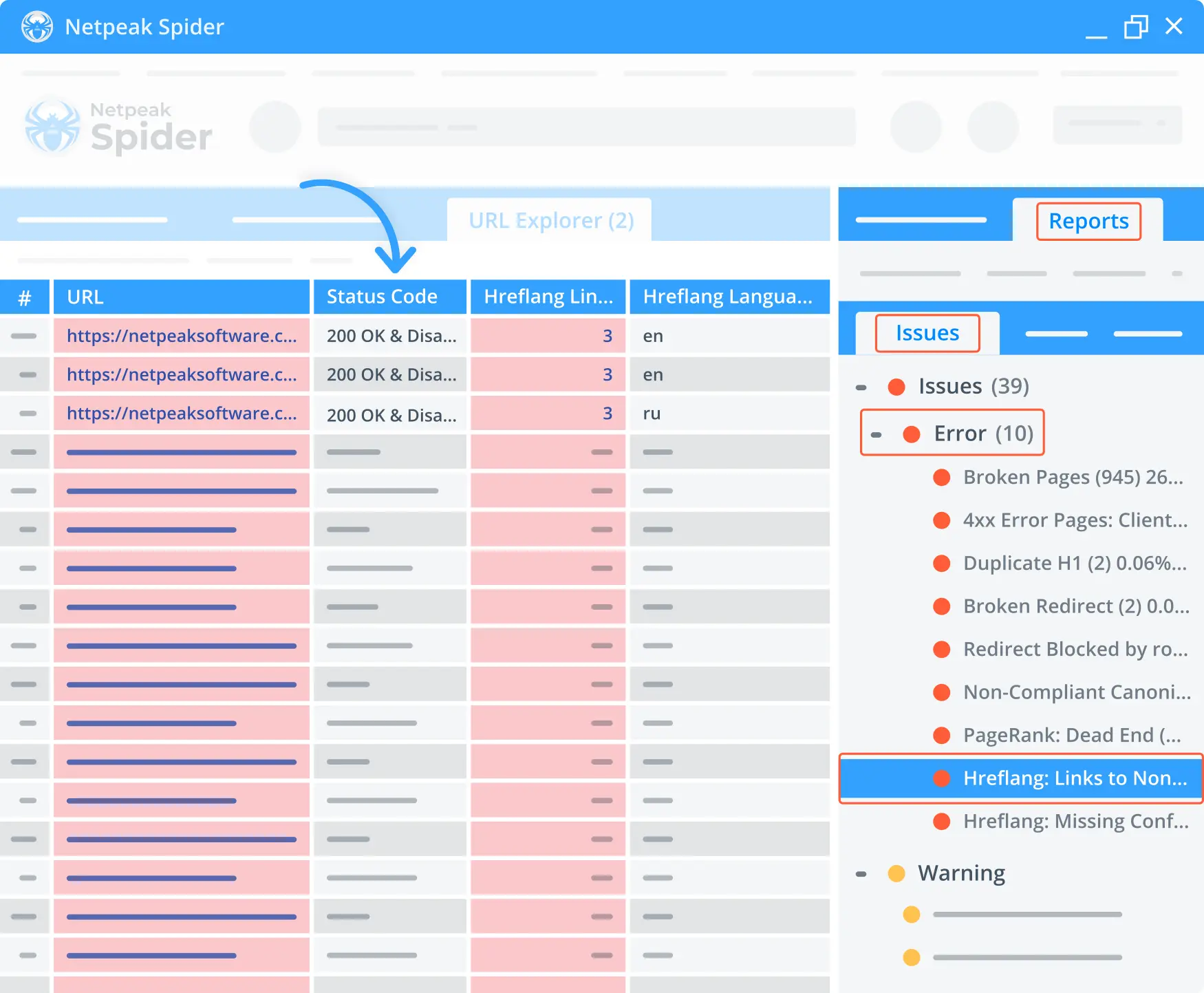
For hreflang tags to work well, every content version must link back to all other versions, including its own. This set of back-and-forth links proves to search engines that all these pages are connected and are part of the same multilingual or multi-regional website.
These return links are significant. They help prevent mistakes in how search engines understand your site, ensuring people see the correct version of your content for their language or region.
Self-Referencing with hreflang
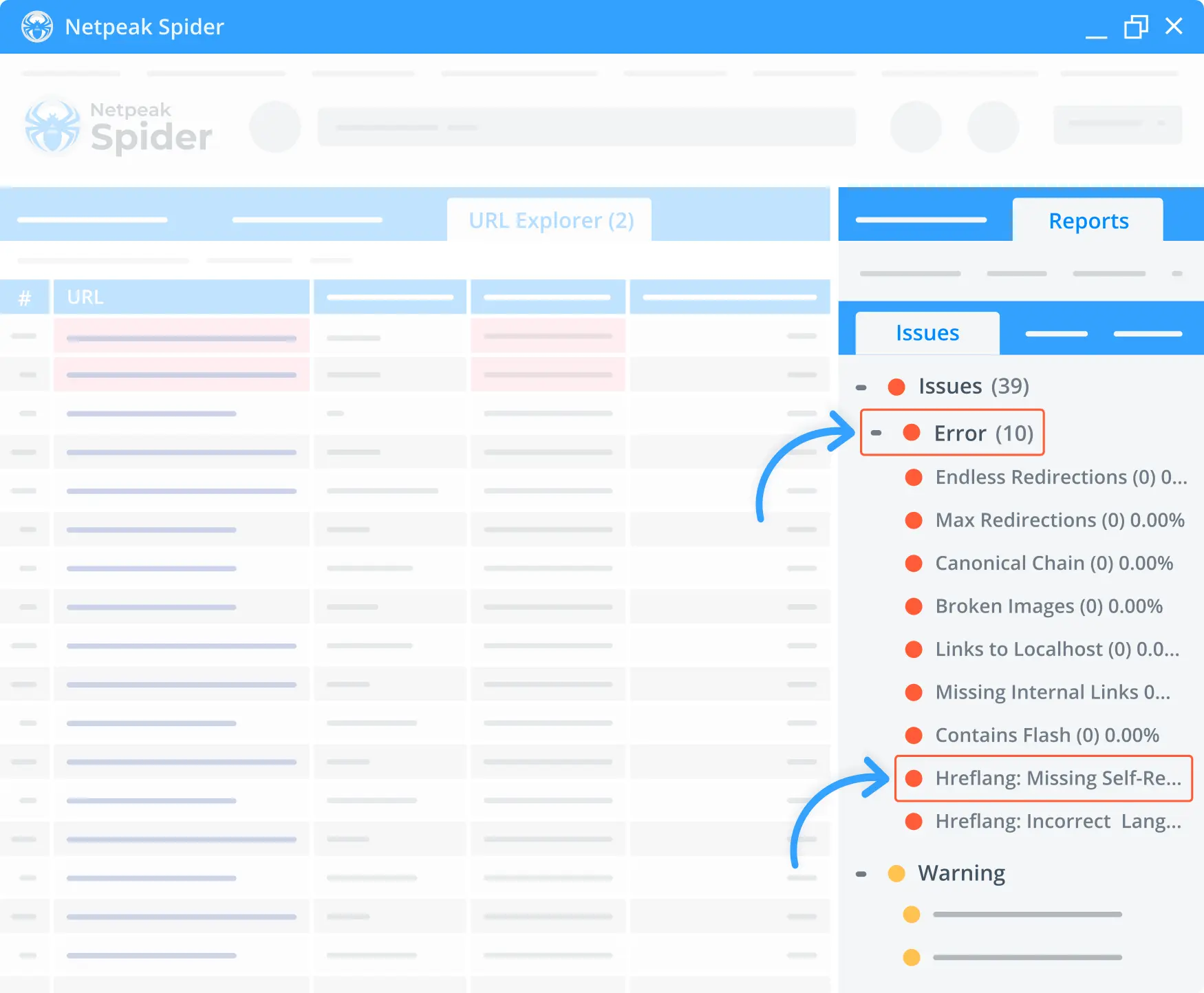
Self-referencing in hreflang tags is a crucial step — and an often missed one. Each page must have a hreflang tag that points to itself, using its language and country code. This tells search engines that the page is made for a specific audience. So, the sour site’s international targeting becomes more precise. Self-referencing helps search engines to sort and present your content.
Exploring Technical Implementation Options
For web admins looking to make their websites friendly for viewers worldwide, it’s essential to know the different ways to use hreflang. Each method has its benefits and works best for certain kinds of websites. Let’s look at three main ways to use hreflang.
Integrating hreflang HTML link elements in your <head>
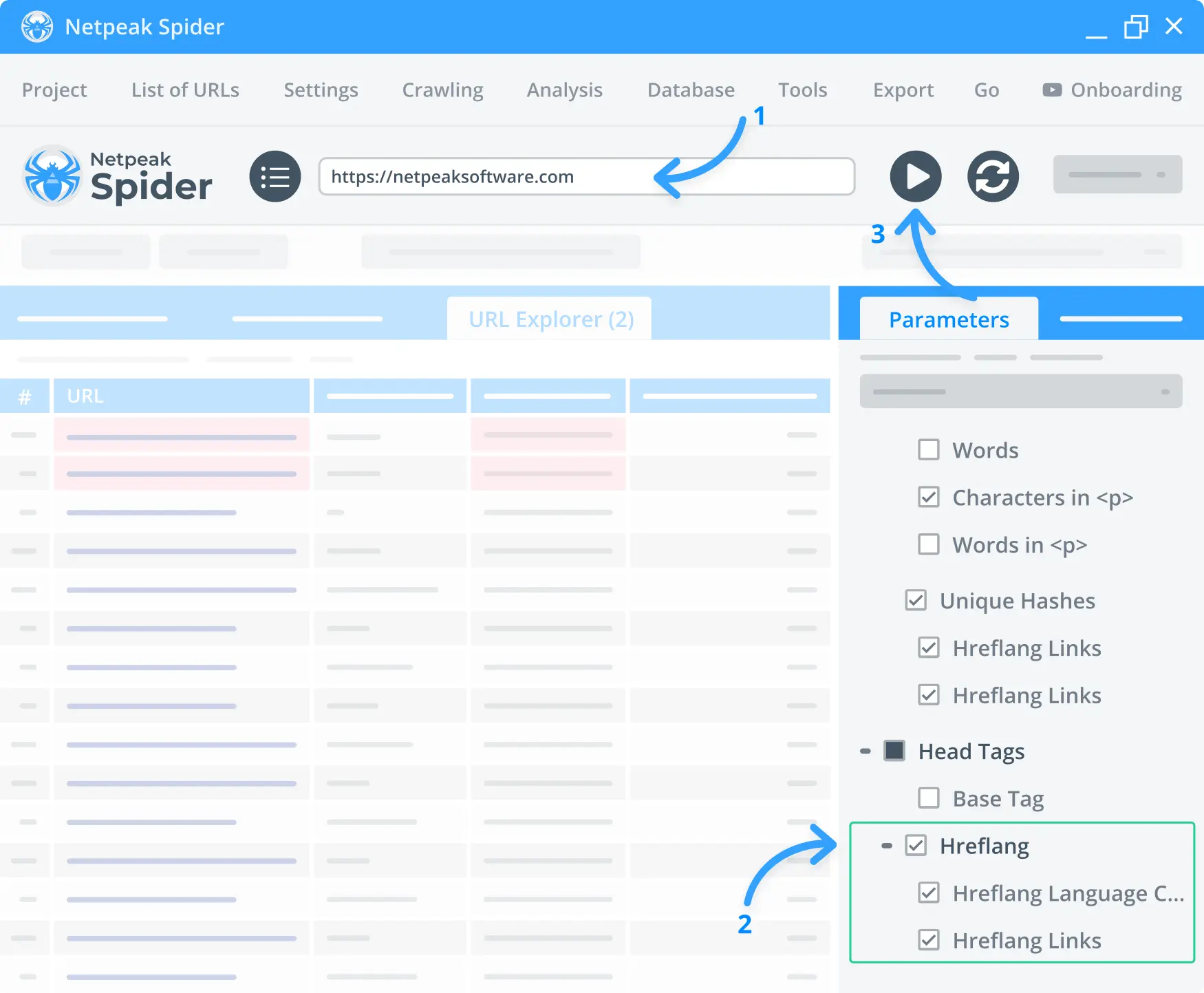
The easiest way to use hreflang is by adding link elements into each page’s HTML <head> section. It means putting in link tags that show that page’s different language or regional versions.
For example, if a page comes in English, Spanish, and French, you would add a link element for each version, including the one for the page itself. This method is obvious to search engines as they go through each page.
Leveraging hreflang HTTP headers
For sites with dynamic content or those using a CMS, you cannot just change the HTML <head> isn’t straightforward. Using HTTP headers for hreflang attributes is a good option.
This method sends hreflang info with the HTTP response headers when someone requests a page. It’s convenient for multimedia content like images and videos, which don’t have a <head> section for adding hreflang tags. Yet, setting up hreflang through HTTP headers is a bit more complex because you need to access and know how to configure the web server.
Adopting an XML sitemap hreflang implementation
Adding hreflang annotations to an XML sitemap is another strategy. This lets web admins put all the URLs for different languages and regions for a piece of content into one sitemap file. It’s an excellent way to show search engines the full international setup of a site in one place.
This method is helpful for big websites with lots of pages because it makes it easier to keep track of hreflang info. However, updating the sitemap with all the current URLs is critical to keep it working well.
Diving Deeper: Other Technical Considerations
For a global impact, there are some extra technical details to consider for perfecting your hreflang setup. Two crucial aspects are using the hreflang x-default attribute and the right way to use hreflang tags together with rel=canonical tags.
Employing hreflang x-default for International Reach
The hreflang x-default tag is like a safety net for your website. It’s used when there isn’t a specific language or regional version of your site to match a user’s needs. This tag directs users to a default site version if their language or region doesn’t match any of the specified hreflang options.
It’s useful for global sites that get visitors from many places, ensuring everyone gets to a relevant page. Even if it’s not perfectly customized for them.
Using the x-default tag is smart for international hreflang SEO because it offers a backup option to improve the website experience for visitors from areas you might not have targeted.
Balancing hreflang with rel=canonical Tags
When combining hreflang and rel=canonical tags, you must be thoughtful to maintain a good balance.
The rel=canonical tag helps avoid problems with duplicate content by showing search engines the “canonical” or preferred webpage version. When you use this with hreflang tags, it’s essential that each content version points to itself as the canonical version. This tells search engines that, although there are many versions of the content for different languages or regions, each one has its own preferred version.
Practical Analysis: Leveraging Netpeak Spider for Hreflang Insights
Netpeak Spider is a desktop program that checks your website like a search engine does. It finds and helps fix issues with hreflang tags, ensuring they’re correct, consistent, and complete throughout your site.
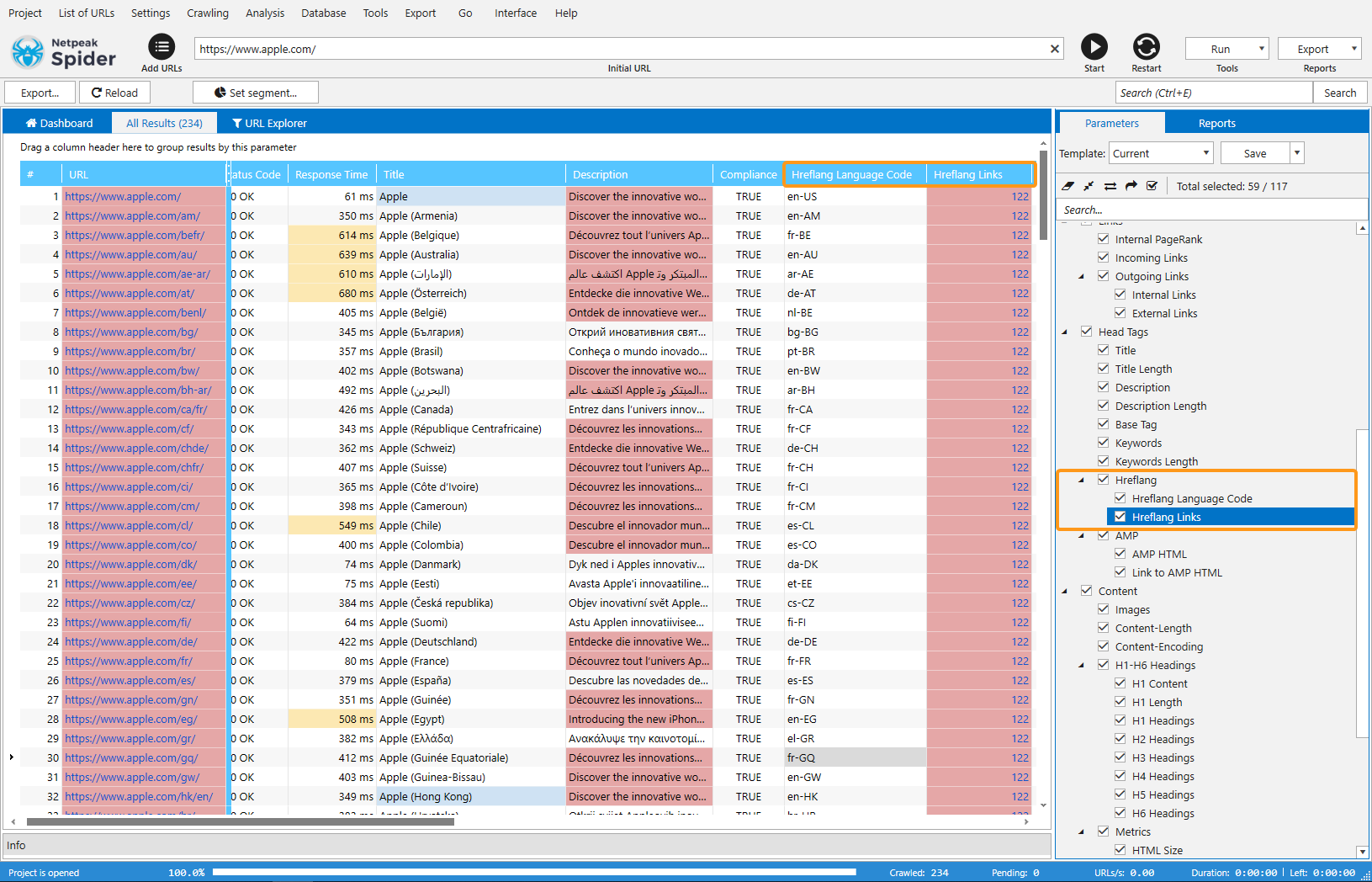
Key Features of Netpeak Spider for Hreflang Analysis:
- Netpeak Spider finds hreflang tag problems. It checks if tags are missing, wrong, or not matching language and country codes to ISO standards for search engines.
- It also ensures every page version links back correctly to others, including itself. It points out when these links are missing or wrong.
- The tool finds pages left out of the hreflang setup. These pages might not reach their target audience, missing out on global market chances.
- Netpeak Spider gives detailed reports and visuals to help teams understand and fix hreflang issues. These insights can help improve your website’s global SEO strategy.
To use Netpeak Spider well, first thoroughly scan your website. After checking, use the tool to look at hreflang tags, focusing on warnings or errors like missing tags, wrong values, or link issues. Netpeak Spider’s reports help find problems to fix, improving your site’s SEO worldwide.
In short, Netpeak Spider helps check hreflang tags efficiently, offering tips to boost your site’s global visibility. Fixing hreflang issues with it ensures your content fits your international audience better, leading to more engagement and SEO wins.
Conclusion: Solidifying Your Global SEO Footprint with Hreflang
Using hreflang is vital for websites targeting multiple languages or regions. It directs users to content they prefer, improving user experience and search engine visibility globally.
Proper hreflang tags strengthen your SEO presence worldwide, increasing traffic and engagement while building trust and authority in global markets. Embrace hreflang to master international SEO complexities and maximize your online presence worldwide.



.png)
